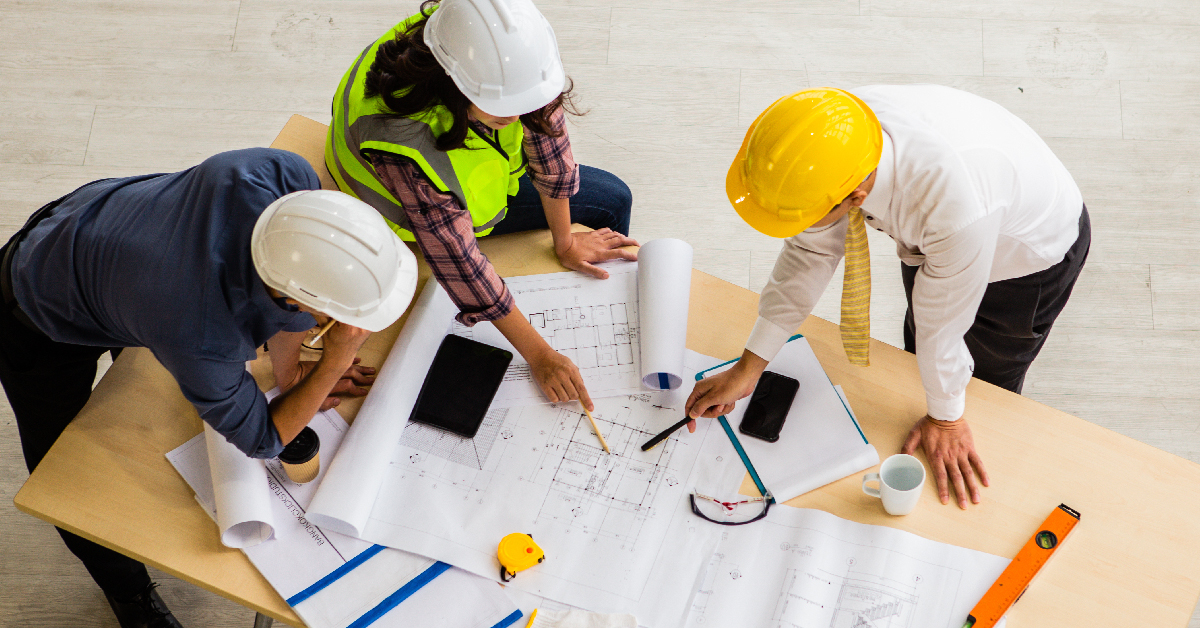Best Practices | Design and Engineering | Blast Resistant Buildings | Hazard Protection
Don’t Gamble With Change Orders: Get It Right the First Time


Building blast-resistant structures is an incredibly complex and challenging process. From designing and engineering the structure to sourcing materials and getting regulatory approvals, many steps require precision and attention to detail. That’s why it’s essential to get it right the first time. Whether you’re a contractor, project manager, or end-user, any mistakes made during the process can have serious consequences, including project delays, safety risks, and increased costs.
The Benefits of an Experienced Blast-Resistant Building Manufacturer
Our experienced team at RedGuard is made up of blast-resistant building experts who know the ropes. There are many benefits to using a manufacturer for blast-resistant buildings with industry experience. Here are just a few:
- Quality: An experienced manufacturer is likely to have a better understanding of the specific industry standards, regulations, and requirements, which results in a better quality product.
- Efficiency: An experienced manufacturer will have established processes and procedures, resulting in more efficient production, reduced lead times, and fewer errors.
- Cost-Effective: Utilizing the knowledge and expertise in the industry of an experienced manufacturer means that solutions will be cost-effective since processes will be optimized.
- Innovation: Look for an experienced manufacturer to provide valuable input and suggestions for improving the design and functionality of a product based on their knowledge of the industry.
- Reliability: An experienced manufacturer is likelier to have a proven track record of delivering high-quality products on time and within budget, giving their clients reliability and peace of mind.
How The Bid Process Goes Wrong
But unfortunately, the experienced manufacturer doesn’t always win the job. Because we’ve been around awhile, we’ve seen it happen.
A potential customer asks for bids on a project, and we turn our proposal in. Our bids are realistic - we build in time for engineering, approvals, communication, design, the availability of supplies, manufacturing, and delivery. We understand the supply chain around blast resistant buildings.
We won’t compromise the process by squeezing the details to fit the request. Customers sometimes choose a bid over ours because they have been promised a specific deadline. Ultimately, after change orders, and stalls, their deadline passes, and their budget is blown. They chose a vendor based on a timeline, but the vendor didn’t deliver.
Unlike our competitors, we get it right the first time, and we won’t try to squeeze a project into an unrealistic deadline. As a result, we rarely require change orders, which is a good thing because change orders can stall projects and raise costs.
You are right to be cautious of manufacturers that promise a deadline to get a job at a lower price. What you may not see coming are the change orders over the course of the project that add dollars and time. Or similarly, a vendor that claims a structure can be delivered in a few weeks, knowing that the project still requires a large amount of onsite construction after delivery. (We’ve seen this with modular concrete.)
We do things differently.
A steel modular building is built offsite, and the only thing that needs to be done on site after delivery is bolting it together and connecting plumbing, electrical, and communications.
The Blast Resistant Building Industry is Evolving – What to Watch For and Avoid
We’re currently on a mission to change how the industry thinks about building projects. We work with our customers to get it right the first time. We like to approach projects by giving customers budgetary pricing so they can fund their projects. We want to work from an “engineering-only” PO as it helps minimize the risk that the price of materials changes between the time of getting the PO and getting engineering complete. After the engineering is complete, we can reprice the project and request a PO for the building, transportation, and onsite assembly.
This concept is good for the customer since they can expect very few, if any, change orders. Engineering is a major hurdle, and so are state reviews and approvals. Getting them done early in the process means the customer is initially “on the hook” for only a small percentage of the project.
If the vendor can’t bid on the project this way, chances are, they don’t have the experience to guarantee the date they’ve promised you. That’s just one pitfall that you could experience.
Choosing the wrong vendor could also mean project delays. If they make mistakes during a project’s design or engineering phase, it can lead to costly delays down the line, especially if changes need to be made mid-project. Don't be afraid to ask about a vendor's approach to project management.
Another thing to watch for is the vendor who recommends a lot of extras you don’t need out of an “abundance of caution.” Don’t get us wrong. There are lines we don’t cross at RedGuard, like never building occupied structures that are high response. When human lives are at stake, it doesn’t make sense to offer a high-response building, which could result in a high level of damage or failure.
However, we’ll never insist that you require protection from risks that aren’t present. A “multi-hazard threat” may require multiple protections, but not every level of risk requires buildings that include all hazards, sometimes just called "multi-hazard." Avoid manufacturers that push their multi-hazard buildings any time multiple protections are required. When you start with modular steel buildings that protect from blasts, you can add other protections, as needed. And if some protections are unnecessary, you avoid added expenses.
Another thing to watch for is damage to a company’s reputation. For example, if a blast-resistant building project goes awry, it could damage the reputation of the customer or contractor, leading to future business losses.
By getting it right the first time, customers can avoid these and other potential pitfalls, ensuring a smoother, safer, and more cost-effective project outcome.
Getting It Right the First Time
Blast-resistant projects are a complex and challenging process that requires precision and attention to detail. Choosing the right vendor for your project is crucial to ensure a smooth, safe, and cost-effective outcome. At RedGuard, our experienced team has been designing and building blast-resistant buildings since 2005, and we are committed to getting it right the first time. We prioritize quality, efficiency, innovation, and reliability in every project we undertake, and we work closely with our customers to understand their unique needs and goals. Contact us today to start planning your blast-resistant project and see the RedGuard difference for yourself.
Carreen Gibbons
Carreen Gibbons is the Communications Specialist at RedGuard. With a natural curiosity toward technical subjects and a love of learning new things, she writes content for the SiteBox Storage and RedGuard websites and spends her days learning new things about the industries that the companies serve.

